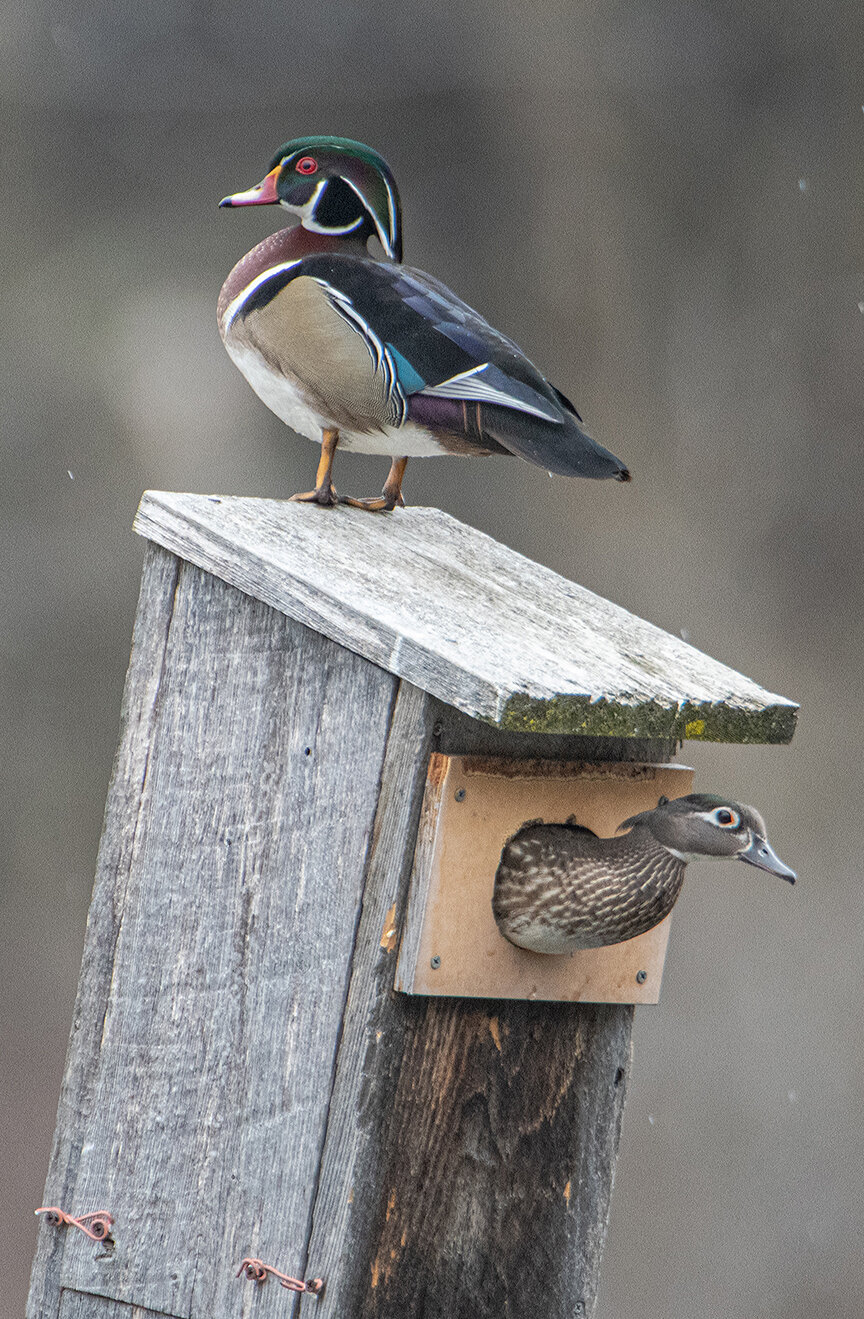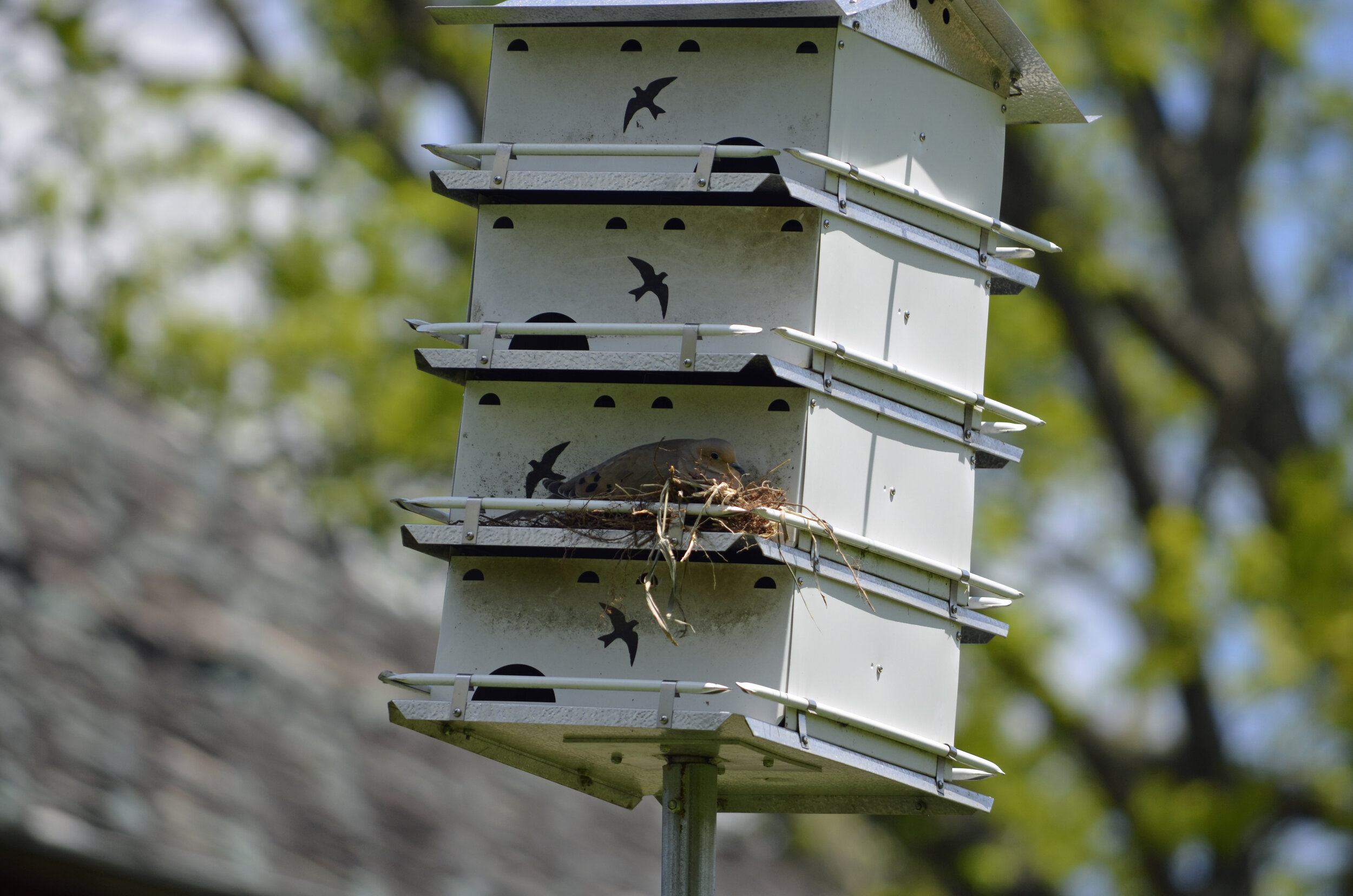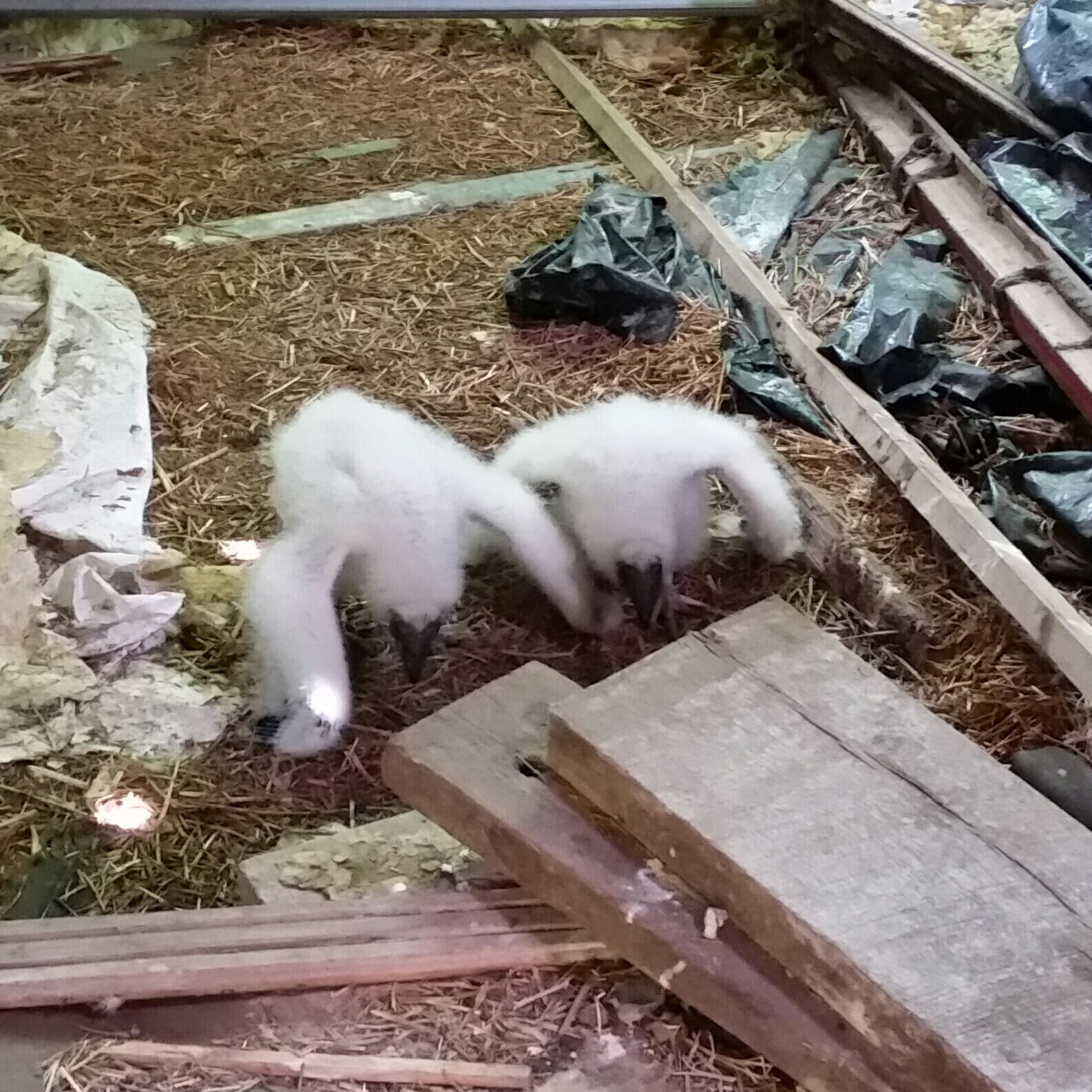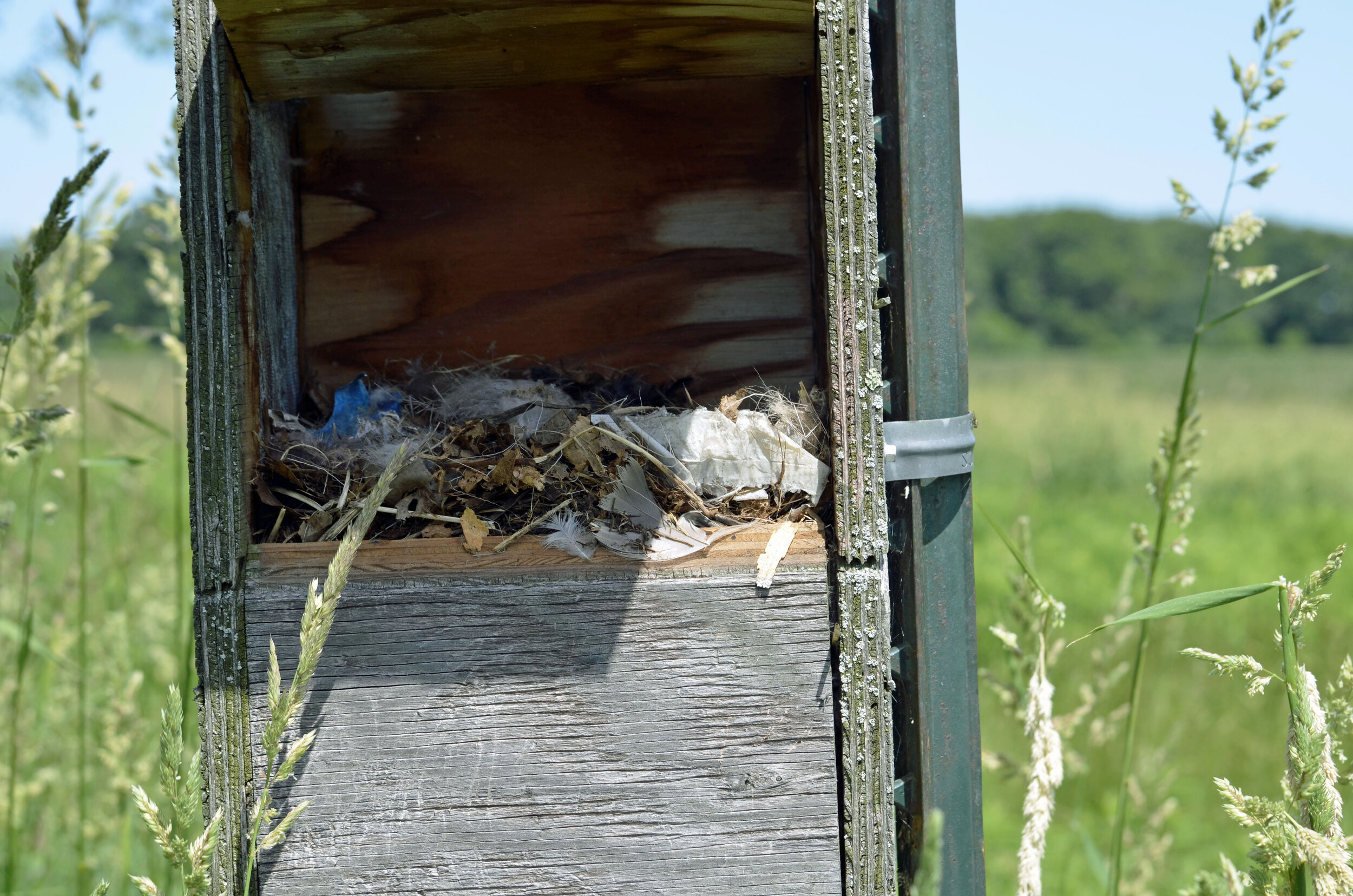If there was an award for dedication and patience for people that erect nest boxes it would go to John Jurgerson from Rio. John and his father made and erected Purple Martin nest boxes beginning in the 1970s. In the 1980s, John purchased tapes with the “dawn song” to attract Purple Martins. He has worn out a number of boomboxes that now play CDs of the dawn song from before dawn until sunset.
Since that time, John had just one pair of purple martins lay one egg in 1992 that did not hatch. John is dedicated and has patience!! For decades, John has maintained at least three large martin boxes and one or two gourd racks. For many years, he has attracted a few sub-adult martins that nest later than the older adults, and still none nested.
Last year, he was rewarded to have three sub-adults around all summer in addition to some birds that visited for a few weeks. A female and male were banded, likely by Dick Nikolai with Madison Audubon’s assistance, at Amish Purple Martin landlords in the northern part of Columbia County. The banded female and the unbanded male nested in his T14 nest box and raised four young. When not working around the yard, John could be found in a chair watching his martins along with Wood Ducks, Hooded Mergansers, House wrens, and Tree and Barns Swallows that nest on his property. His brother Jerry helps maintain all the other nest boxes.
If you see a person in Columbia County wearing a purple, “Purple Martin landlord shirt”, stop and visit with John.
Written by Mark Martin and Susan Foote-Martin, resident managers, Goose Pond Sanctuary
Cover photo by Mark Martin






















